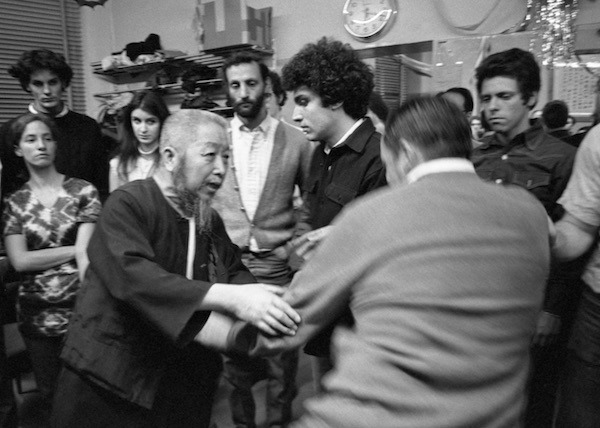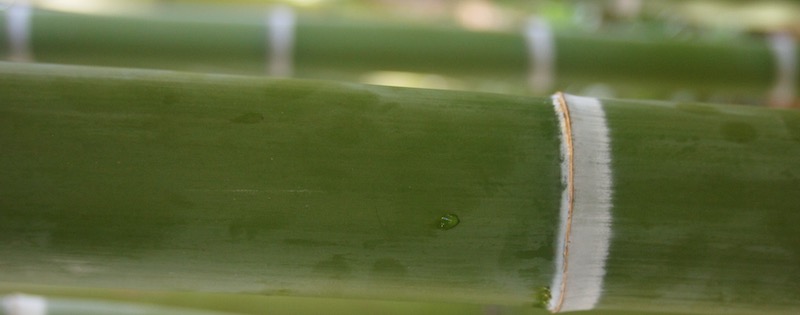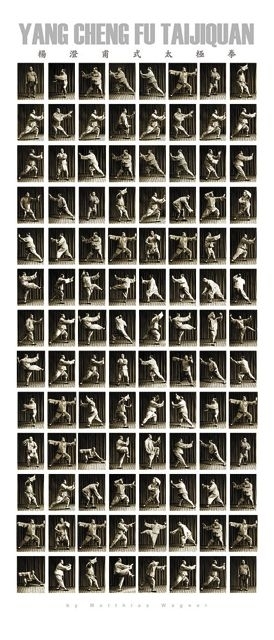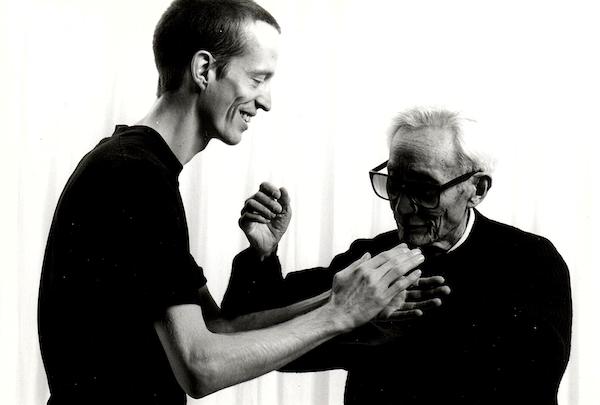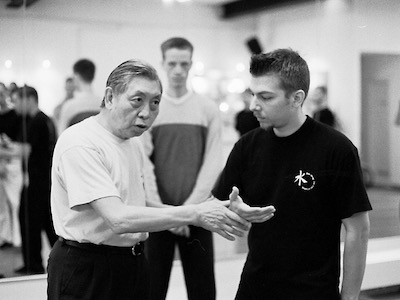Part 4/4 – Tai Chi as a martial art, Tips for teaching Tai Chi, san shou forms and partner work
Tai Chi as a martial art

Asked about the difference between Tai Chi and Tai Chi as a martial art, Master Chen states that Tai Chi for self defense is (still) Tai Chi.
Depending on the practitioner, Tai chi application is Tai Chi or Tai Chi and other techniques in a combination. From the body mechanics standpoint – looking at the practical side of Tai Chi as a martial art and the (physical) laws that govern bodily fights – one may find that other martial arts that are not related to Tai Chi have the same techniques. – “If they are correct”, Master Chen adds, which seems to hint at the idea that there has to be one right way to fight with a human body, expressed in different ways by different schools of martial arts.
So what is the difference between Tai Chi and other martial arts? “Martial arts is (just) martial arts even if people train it in different ways.” For Master Chen the main difference is that he himself likes Tai Chi with its body mechanics and its slow, soft and clear approach. Tai Chi also improves the physical / mental coordination – again an aspect which, he underlines, can also be the result of other martial arts.
Concerning training Tai Chi as a martial art, Master Chen recommends to train application with gloves for protection, “because otherwise people hold too much back”. He mentions that there are people training Tai Chi that do not use gloves out of principle because “it blocks their Qi”. For Master Chen this hints at a “belief in Qi” rather than at a practical point. As he says: “No matter how super your gas (the Qi in your “vehicle” = body) is, if the engine does not work, it does not help you to run the car.” – For Master Chen this is why he concentrates more on the fine-tuning of the engine (body mechanics) than on the Qi itself.
Influence of Tai chi on your life
For Master Chen the influence of Tai Chi on his life is that he has something that he likes and that he can share with people. When students are getting something out of it, Master Chen feels that this is part of the reward. He observes that committed Tai Chi people are generally easier to get along with as Tai chi does not further aggression. Master Chen does not see a special status connected to practicing Tai Chi. Being interested in the practical aspects of the art, Tai Chi is about “having muscles and being able to use them”. – Being able to apply those body mechanics makes the “super fighter” – this expertise can be seen in practitioners of other martial arts, e.g. modern boxing, as well.
Tipps for Teaching Tai Chi – Advice for (future) Tai Chi teachers

What advice would Master Chen give to future Tai Chi teachers?
- First of all erase all the phrases like “not good” and “not right” from your internal dictionary: the golden way to phrase one’s comments is “good”, “right”, “not bad” or “excellent”.
- Encourage your students to learn, interest them in the movements.
- If a student does not get something right over a longer period of time, the teacher needs to be more patient, because the main reason generally is that the students are already nervous.
- Encourage your students to “take their time” to reduce pressure when they are trying too hard.
- Actively find new ways to encourage learning.
- Only teach what you know.
- If somebody else does something different than yourself, it may be right in a way you do not know and the other way round. – So, as a rule: Do not criticize, try to avoid these conflicts.
- The advice to abstain from judgment also goes for general criticism (“that is not true Tai Chi”) and criticizing the ways of others just because one notices a difference to one’s own approach.
- Even as teachers, we are not perfect.
- Instead of talking too much, take time to take in the differences and think about them.
- When correcting students’ forms: Do not not correct too much. Let yourself be led by the assumption that the student makes their own memory shapes and does exactly what they want to.
- In (application) exercises: Correct the student, if they try to copy exactly what you do but it looks different.
- Fine correction of final postures does not matter. – It is the student that makes the decision how far they go (e.g. when pushing out). The point of training the form is to be able to get the exact image that one wants to produce.
- Concerning making the shapes / adopting the postures in the form: It is always the student that has to decide what they want to do.
San Shou forms and partnerwork
Did Cheng Man Ching devise a San Shou form? – No. Yang Chengfu’s student Chen Weiming, technically a training brother of Cheng Man Ching, created a San Shou form and even published a book of this two-men set.
San Shou forms are not for free style practice, but offer prearranged application patterns. They are generally not too bad to know – “executed with body mechanics, they are even better”.
There are some San Shou forms known in the Cheng Man Ching System, by Dr. Tao Ping-Sing, by T.T. Liang, who also studied with him and maybe also from other students.
Tai Chi for relaxation and an active life
As Master Chen was stressing the benefits of Tai Chi for calmness and relaxation – what about Tai Chi for feeling more active and developing more power? Jokingly, Master Chen recommends his student to try Chen style, as they are more rigid and also work with a lot of tension.
But seriously, he cautions that Tai Chi should not to be seen or used as some sort of relaxation drug: you drink and after that you might end up too relaxed to do anything…
So what is Tai Chi rather about? It is about learning how to use minimal energy. – Thus it makes possible all kinds of activities. If that is still not enough, the student in question should maybe go out, to the disco – but while dancing: only use the energy you have. Do not overdo it! – Minimal effort for maximum entertainment.
In fact, the calming down part on the physical side of Tai Chi is not to be described as a sagging feeling, where your body drags you down and discourages further activity. Instead, it the feeling is more like getting rid of over-tension, being good-to-go, free to move.
As Tai Chi is not a one fits all approach, feeling without energy may also be addressed by choosing to adopt a lifestyle that is creative – that allows one to do something productive.
Spilling the tea: When Tai Chi Masters meet
For all readers who wonder what kind of table talk Tai Chi Masters engage in and which topics are popular when Tai Chi masters meet, do not miss the last part of the video. – What’s in it? Let’s just say it shows that all Masters are human. And – up until today, with some rare exceptions, one might add – middle-aged and elder men…
The video ends with a pan shot around the room. – Who knows, maybe you will discover some familiar faces…
Video William C C Chen Q&A 1992 4/4
Author: Gabi Kannenberg
Images: Nils Klug and Taiji Forum
German version of this series

